|
Telescopius (formerly known as DSO-Browser) is a great tool for astrophotographers who are planning an astrophotography session. It provides a lot of useful information regarding the deep-sky objects visible from your location, and hosts an active community to share your work. Getting started with Telescopius: (from spaceoddities.eu) The first step is to enter your precise location (GPS coordinates or the name of your city), and Telescopius will give you a list of interesting objects to observe or photograph. It also displays useful information, such as the apparent magnitude, the elevation and the size of your target. Telescopius has a comprehensive list of objects: galaxies, emission and planetary nebulae, star clusters, supernovas… Powerful filters allow you to search for your favourite objects, with criteria such as magnitude, elevation, brightness, constellation… Clicking on an object reveals a lot of useful informations and additional features. For example, you can check the elevation (how high an object is in the sky) at any given time of the day, which is helpful to know if the target will be high enough in the sky. The background indicates the periods of the day: night, sunrise, day and sunset. The monthly elevation graph tells you the maximum elevation of the object during the year, at a given time. For instance, in Germany, the Andromeda galaxy is a late summer object and is best seen from August. As for the data sheet, it shows other interesting information. For example, the red shift indicates the speed of the object compared to the speed of light. Here, a negative red shift of -0.0010 (which is actually a blue shift) means that the Andromeda galaxy is actually getting closer to us, to a speed of 300 km/s! THE TELESCOPE SIMULATOR Another great tool is the telescope simulator. It allows you to preview how the object will look in your telescope, binoculars or camera sensor. This is great for beginners, for whom most of the objects are totally new. Not to mention that some of these objects are actually much bigger that what we think! For instance, the Andromeda galaxy is about four times wider as the Moon. How to use the telescope simulator:
If you are registered on Telescopius, you can save the lenses and telescopes that you are using, as well as the cameras, and select them easily in the simulator. THE WEATHER FORECASTS Yet another interesting feature on Telescopius is the 7-day hourly weather forecast. This page presents an overview of the meteorologic parameters of the upcoming nights, based on your location. It also displays the phase of the Moon, which is useful since our satellite is a source of light pollution.
The bands at the bottom represent the hourly evolution of the main parameters, such as seeing, wind and cloud coverage, as well as the sun- and moonlight. The colour code is simple: black is optimal, red is the worst. For example, at 4pm, the sun is still up, so the darkness is obviously red. At midnight, the darkness is optimal (i.e. black), but the Moon is rising and will create a bit of light pollution, so the band is slightly reddish. Of course, this is a forecast, and by definition, it’s wrong! But it is usually accurate enough for you to plan your session in advance. Despite its convenience, I rarely use Telescopius’ forecast, because I prefer the more detailed astroforecasts of Meteo Blue. A community to share your workLast but not least, Telescopius also hosts a community of astrophotographers, which you can use to discover the work of very talented photographers.
0 Comments
Leave a Reply. |
“The cosmos is within us. We are made of star-stuff. We are a way for the universe to know itself.” archives
January 2020
categories |
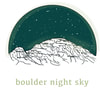
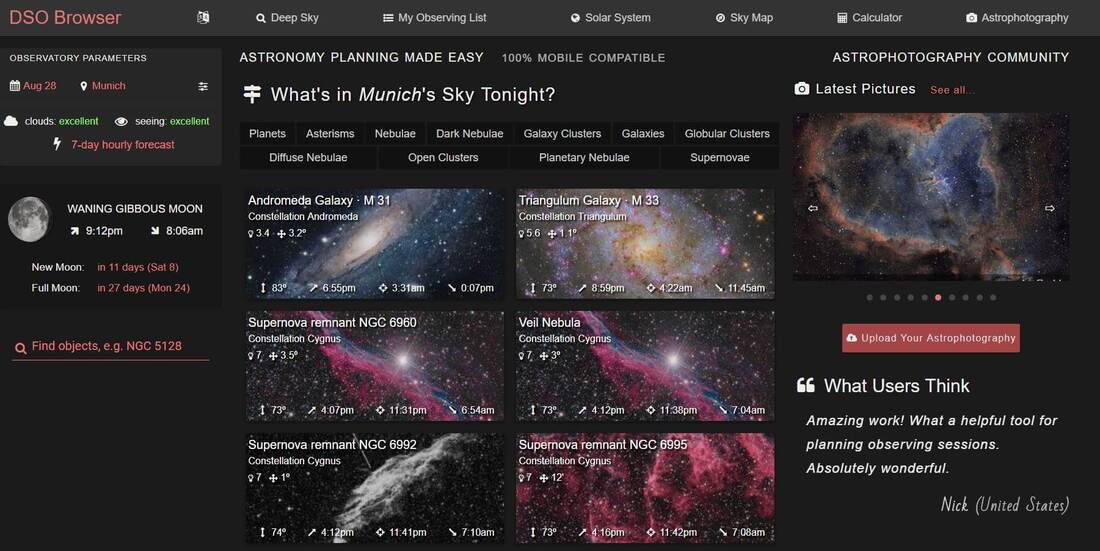
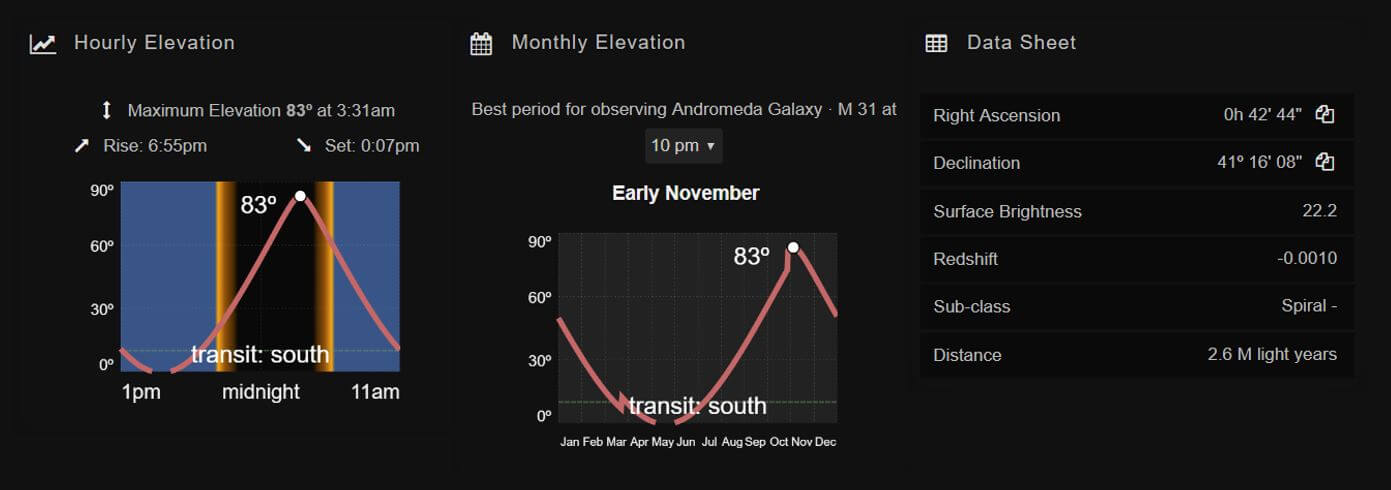
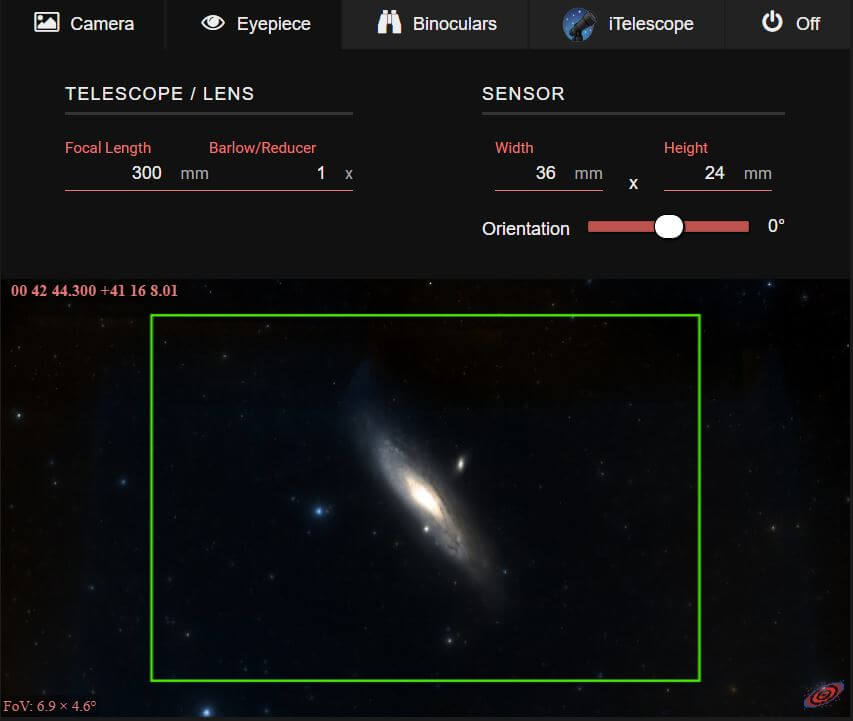
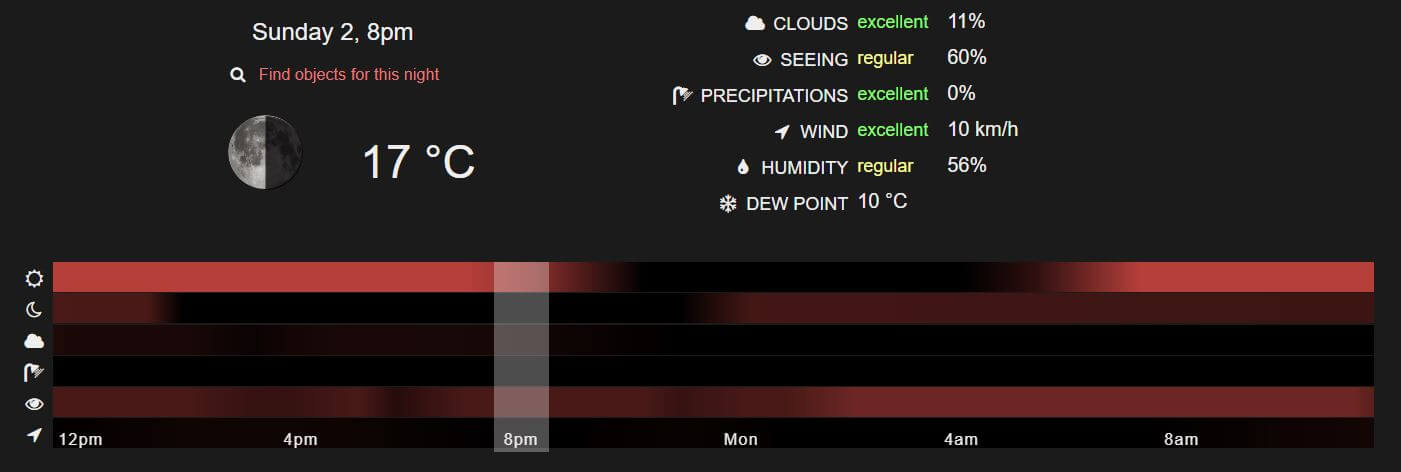
 RSS Feed
RSS Feed
